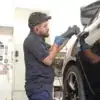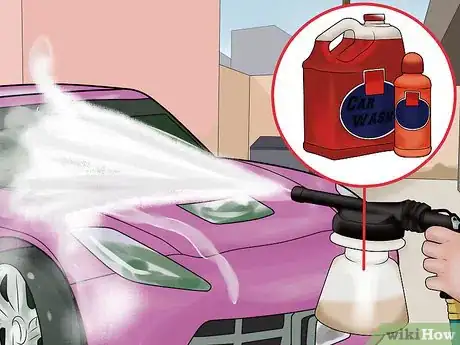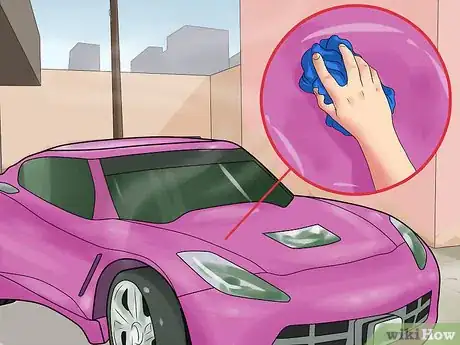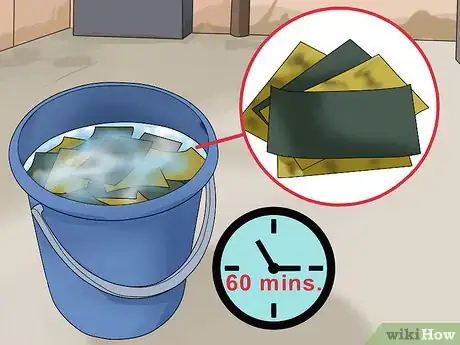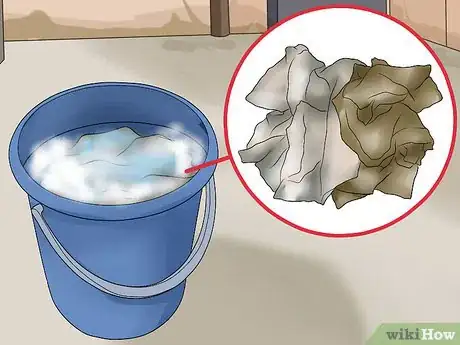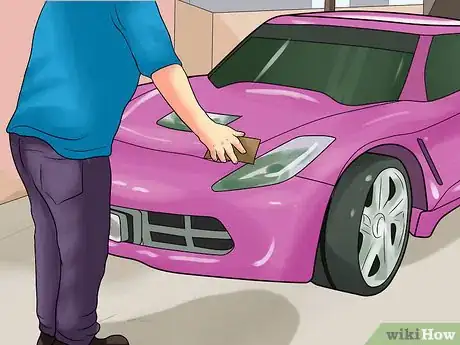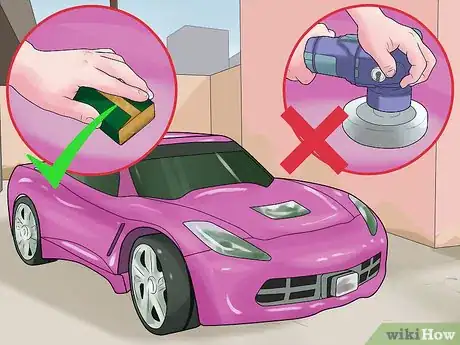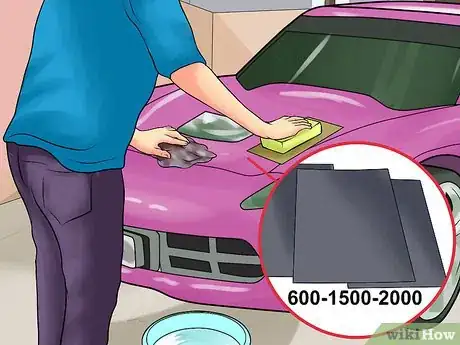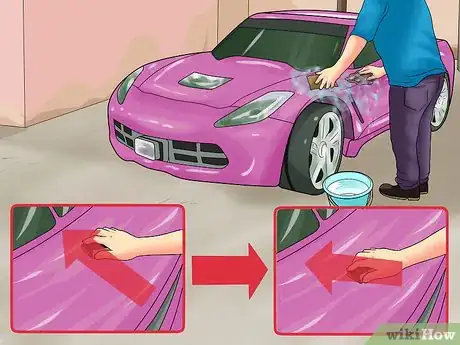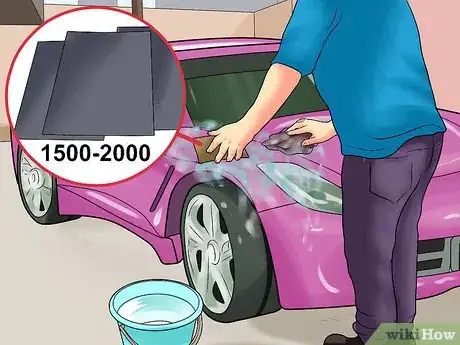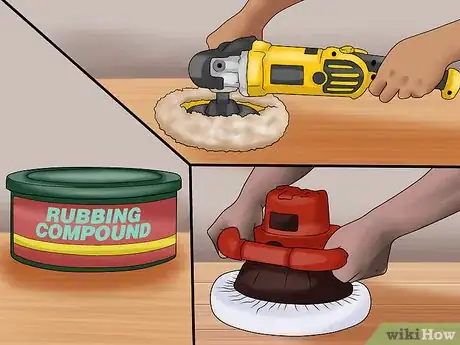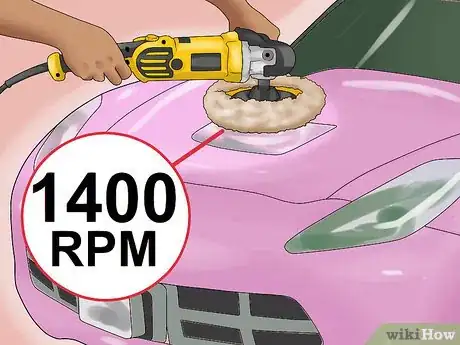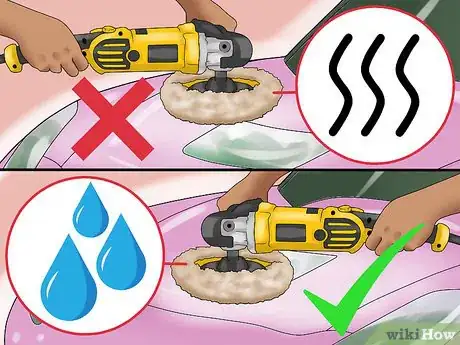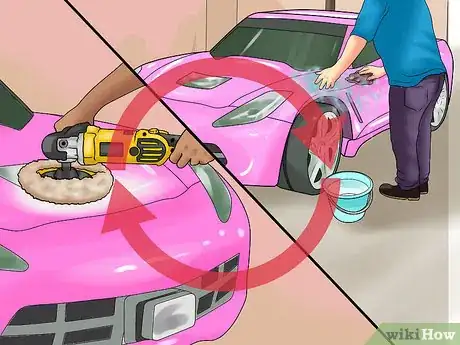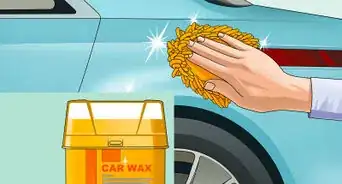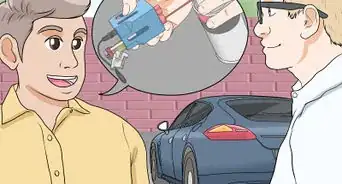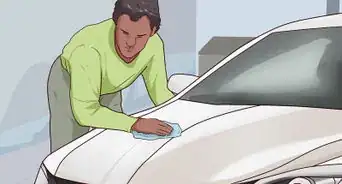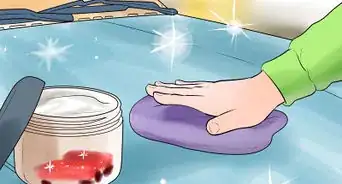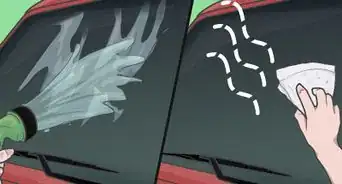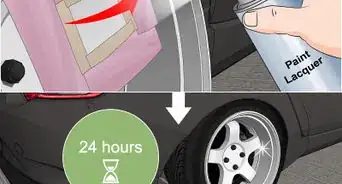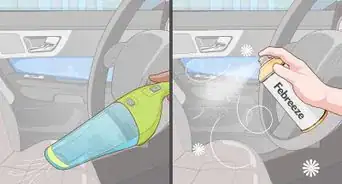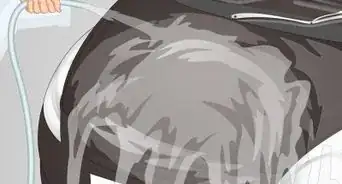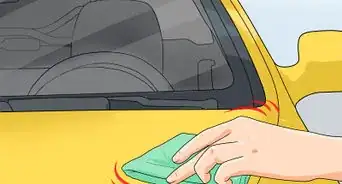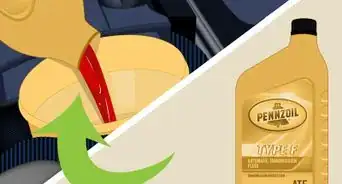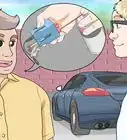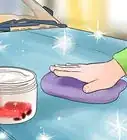This article was co-authored by Angel Ricardo. Angel Ricardo is the owner of Ricardo's Mobile Auto Detail headquartered in Venice, California. With over 10 years of experience in mobile detailing, Angel continues to attend auto detailing trainings to improve his customer service and auto detailing skills.
wikiHow marks an article as reader-approved once it receives enough positive feedback. In this case, 100% of readers who voted found the article helpful, earning it our reader-approved status.
This article has been viewed 292,967 times.
Nearly 95 percent of all cars manufactured today are finished with a clear coat paint job.[1] This is the glossy finish that most drivers expect from a new car’s body, and it helps protect the paint on your car.[2] A clear coat needs to be waxed and maintained to keep its luster, but you may eventually have to wet sand it to restore its original finish. Even though a glossy car coat looks like it can be done only in an expensive body shop, wet sanding a clear coat is a pretty straightforward process, albeit a considerable amount of work. All you need is two different grades of sandpaper (600 and 1500- to 2000-grade paper), a bucket, a rag, a towel, a low RPM buffer, high-grade auto body cleaning solution, and water. Follow these steps to make your car body shine like a floor model.
Steps
Cleaning and Soaking
-
1Clean the exterior of your car. Use water and a dedicated car washing solution/soap.[3] Follow the bottle’s directions carefully. Your goal is to remove any dirt or grime so that you can focus on the clear coat directly when you sand and buff.
-
2Allow the surface to dry. Once you have completely cleaned your body, allow it to dry by gently wiping down the surface with a towel.Advertisement
-
3Soak all of your sandpaper. Soak for at least 60 minutes in clean water to prevent sharp edges from scratching the clear coat.
-
4Soak a rag. Next soak a rag in water with a little bit of soap. Use about a cap of soap per gallon of water, or as directed by your soap label.
Sanding
-
1Focus on sanding one small section at a time. The size of the section is up to you, but one square foot at a time is usually a good approach; just remember which sections you have done and which you haven’t. This will make the job of sanding the entire car body more manageable. It will also ensure that each part of the surface receives adequate attention.
-
2Use a sanding block or pad—not a power sander. Ideally, you’d use a rubber pad as it helps conform to the shape of your panel’s surface.[4]
-
3Begin sanding. For optimal results, start with the 600-grit sandpaper,[5] and then sand later with the higher-grit paper, such as a 1500-2000-grit paper. Otherwise, go straight to the higher-grit paper.
- Use very little pressure.
- With your soaked paper in one hand and a wet rag in the other, begin sanding with long strokes all in the direction wind travels across the car: from bumper to windshield, for example.
- Sand with one hand, and use your other hand to keep the surface wet with your rag.
- Remember to sand evenly. Periodically take a step back to look at your progress and make sure everything looks even.
-
4Change directions. After sanding in one direction, cross out the original strokes with a slight diagonal direction. Remember to keep the surface dripping wet, to prevent burning the clear coat.
-
5Sand with higher-grit paper. If you’ve chosen to begin with 600-grit paper, now is the time to do a second sanding with 1500-grit or 2000-grit paper.
-
6Make it dull. Your surface should appear very dull after sanding. This is the goal. Buffing will make it shine.
Buffing
-
1Choose a rubbing compound. Experts recommend Dewalt for beginners. B&D Buffmaster is good for more experienced buffers.
-
2Start using your buffer. Once you have achieved a desired finish with sanding, you’re ready to start buffing. Be sure to buff at a low RPM of about 1400.
- Don’t keep the buffer in one place for more than one or two seconds.
- Buff sparingly. Buff the scratches sparingly to prevent a burn. Keep the buffer moving and watch that you don’t overheat the surface.
-
3Don’t let the buffer run dry. If you do, you’ll end up needing to re-sand, or maybe even re-clear the surface.
-
4Protect your clear coat. Protecting your clear coat should be done on an ongoing basis. Weekly car washing and periodic waxing are the best ways to protect the clear coat.
Expert Q&A
-
QuestionWhat is the use of a clear coat?
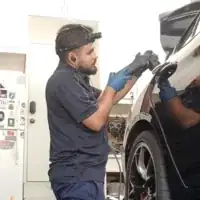 Angel RicardoAngel Ricardo is the owner of Ricardo's Mobile Auto Detail headquartered in Venice, California. With over 10 years of experience in mobile detailing, Angel continues to attend auto detailing trainings to improve his customer service and auto detailing skills.
Angel RicardoAngel Ricardo is the owner of Ricardo's Mobile Auto Detail headquartered in Venice, California. With over 10 years of experience in mobile detailing, Angel continues to attend auto detailing trainings to improve his customer service and auto detailing skills.
Auto Technician A clear coat makes your car's paint look glossy, like a new vehicle typically looks. A clear coat also protects your car's paint.
A clear coat makes your car's paint look glossy, like a new vehicle typically looks. A clear coat also protects your car's paint. -
QuestionWhat should I do if the clear coat on my car is coming off in different places?
 Community AnswerYou should get it repainted; it's too far gone to save. If the clear coat has delaminated from the base coat and is flaking off, you need to wax and protect the clear coat from day one to avoid that.
Community AnswerYou should get it repainted; it's too far gone to save. If the clear coat has delaminated from the base coat and is flaking off, you need to wax and protect the clear coat from day one to avoid that. -
QuestionWet "sanding" sounds dangerous for the coat. Is this true?
 Community AnswerNo it's perfectly fine. You have to make tiny scratches in it to get it to look nice. Just make sure you buff after or else you'll be left with a very dull clear coat.
Community AnswerNo it's perfectly fine. You have to make tiny scratches in it to get it to look nice. Just make sure you buff after or else you'll be left with a very dull clear coat.
Warnings
- Be careful, especially while sanding. The clear coat on your car is only about as thick as a sheet of paper.⧼thumbs_response⧽
- Wet sanding is a dirty, wet, and long process but well worth the work!⧼thumbs_response⧽
- Don’t use a power sander.[6]⧼thumbs_response⧽
Things You’ll Need
- 600-grit sandpaper
- 1500-2000 grit sandpaper
- A 5 gallon (18.9 L) bucket
- Rag
- Towel
- Low RPM Buffer
- Car washing solution/soap
- Water
References
- ↑ https://www.carsdirect.com/car-maintenance/clear-coat-car-paint-understanding-the-pros-and-cons
- ↑ Angel Ricardo. Auto Technician. Expert Interview. 1 October 2019.
- ↑ http://www.consumerreports.org/cro/news/2012/12/do-s-and-don-ts-of-washing-your-car/index.htm
- ↑ http://www.hotrod.com/how-to/paint-body/hrdp-0805-color-sanding/
- ↑ http://www.hotrod.com/how-to/paint-body/hrdp-0805-color-sanding/
- ↑ http://www.hotrod.com/how-to/paint-body/hrdp-0805-color-sanding/
About This Article
To sand a clear coat, start by soaking some sandpaper in water for 1 hour to soften the edges so they don’t scratch the coat. While that’s soaking, wash and dry your car so the clear coat is fully exposed. Then, wrap a sheet of the wet sandpaper around a sanding block and sand your car in small sections. After working on each section, use a rag soaked in a solution of water and car soap to keep the surface wet, which will prevent the clear coat from burning. Finally, use a rubbing compound and a high speed buffer to buff the car and make it shine. To learn more, like how to decide what grade of sandpaper you should use on your car, read on!
